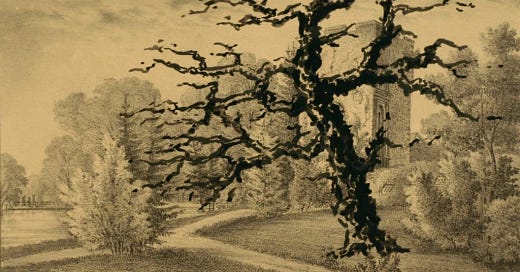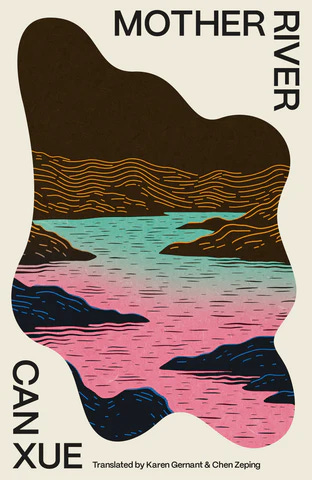“That’s so Can Xue.”
My partner smiles, unsure of what I really mean. What do I mean?
When you describe the stories of Can Xue to someone you feel a little crazy. A gleam in the listener’s eye lets you know of an eccentricity within you that isn’t normally there. It’s the eccentricity of her characters, stripped down by reason and confusion to their bare essentials. A pure honesty.
A misreading of her work by The Harvard Crimson serves as good testament to what her work accomplishes. The reviewer was confused by the lack of resolution, by the ambiguous nature of Xue’s conflicts which vanish as quickly as they appear. Hers are fictions of anticonflict, where tensions both personal and communal melt under the heat of humility.
Xue’s upcoming collection Mother River—the latest publication in a long backlist translated by Karen Gernant and Chen Zeping—opens with three ecological fables. In the title story, a young man is drawn to his community’s river and the shadowy figure that emerges from it. The people around him seem to have some understanding of the river’s power that he tries to parse out, but knowing Can Xue, we know the question is not so much the point as it is the state of questioning.
“This Wu River that nurtured Fishing River Village wanted to tell us something that was a little hard to talk about. It did so by demonstrating what it wanted to say. That’s all I knew about it. Well, then, how much did Meng Ha know? Was he limited, too, in what he knew? Indeed, the dark shadow was as inconceivable as a spherical map. Meng Ha and Uncle Jun lived every day among these incredible objects. Uncle Jun had even made this one with his own hands. And I was just a beginner. I was with these alien life-forms at every moment, but I was deaf to their whispers.”
“Stone Village” and “Smog City” capture life under conditions of ecological hardship. While the village is beset by stones that grow out of the ground and destroy homes and nature, the city is encased in a smog so thick that society reorganizes around reduced visibility. What’s striking about these two stories is their lack of despair. The citizens of Stone Village and Smog City do despair, but they also adjust. When the narrator of Stone Village is waiting for her relatives to return home, unsure of their condition and the future of the land, she waits.
“Everyone in the family was waiting for something to happen. I was waiting, too, but I had no idea what the something would be. I thought they knew, and sometimes I couldn’t keep from asking Yinxiu. She said, ‘It’s what you’re doing every day.’”
And later,
“‘Why do I always overlook important things?’ I was very annoyed with myself. ‘It doesn’t matter whether you see them or not, Tater. You resemble them.’”
In Smog City, the elders are often called upon to describe life before the smog. The question and response both are driven by pure curiosity, with a disdain for nostalgia.
“I’m sixty-eight years old. I don’t like nostalgia. I always look ahead with anticipation in my heart. This is also the character of the Smog City residents.”
These stories promote a forward-thinking ethos that rejects nostalgia as regressive, that finds meaning in what one does every day. The importance of things lies in our resemblance of them. For Xue, resemblance and curiosity are tools more powerful than definitions or answers. Definitions hide, resemblance is presence. Answers imply endings, but curiosity drives progress.
“The world hadn’t declined because of the change; instead, it had aroused the curiosity of the new generation.”





